Once we've laid out a landscape — installed the pavers and edging and mulch, placed the plants — we can sit back in deck chairs and admire the splendor of a beautiful vista. But there's another element just below the surface — a fourth dimension that thrills our senses and brings us fully into the place. Butterflies add a presence of color and movement that echos the flowers, grasses and stone walls in our gardens, delighting and surprising. Gardening for butterflies is perhaps the simplest thing you can do in your landscape — likely you already have the basic elements to help them thrive.
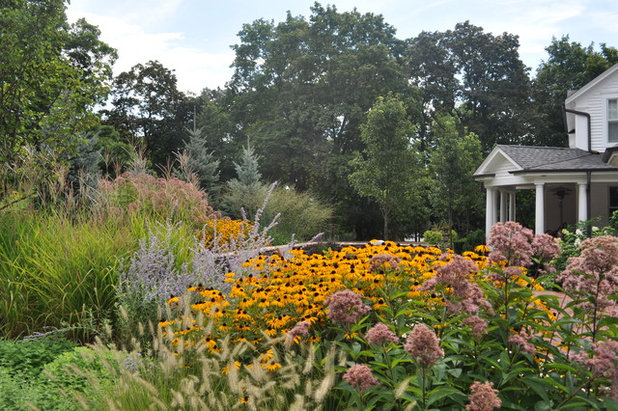
Milieu Design
Start With What You PlantObviously, the first thing you can do to attract butterflies is to plant flowering plants, from perennials to shrubs and even trees. You can plant them in masses and drifts, or go for a more random cottage style. Formal or informal — the butterflies won't care.
What our winged friends do care about is what kind of flowers you have. Generally, the greater diversity you have, the better. And in general the less complicated the flower, the better. For example, new cultivars of coneflower that have double layers of frothy petals confuse butterflies and other pollinating insects, so they'll ignore the bloom. The "simpler" flowers — like purple or yellow coneflower, black-eyed Susan, Joy Pye Weed, mountain mint, blazing star and aster — are perfect, especially if they are not named cultivars; straight-species flowers often have the flavor butterflies prefer and have evolved with, unlike many cultivars, which have been bred in favor of a certain growth habit or petal color.
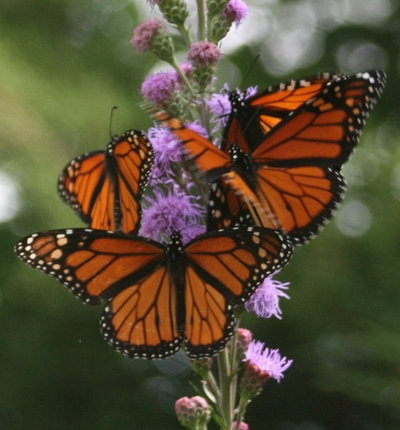
Benjamin Vogt / Monarch Gardens
Certain butterflies are especially attracted to certain flowers — monarchs go especially nuts for blazing star, or
Liatris ligulistylis.
Finding out which flowers will work especially well for you requires a bit of trial and error based on your location. A good place to start, though, is local university extension offices or arboretums, as well as native-plant nurseries that specialize in attracting and providing for wildlife. You'll certainly be doing yourself a favor if you find plants native to your area.
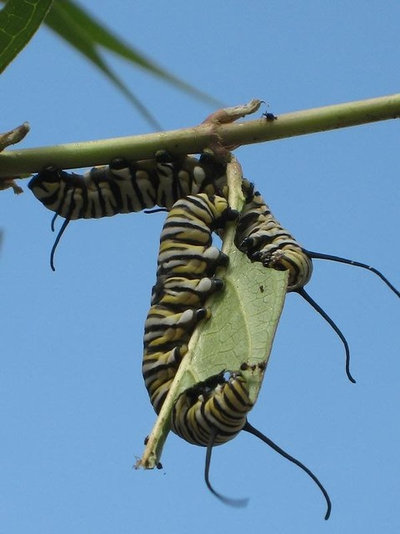
Benjamin Vogt / Monarch Gardens
If you want as many butterflies as you can get, you must use host plants — plants that butterflies raise their young on: milkweed for monarchs, fennel or parsley for black swallowtails, plantain for buckeyes, baptisia for sulphurs. Many tree species are particularly important, like oak, black cherry and willow.
Gardens With Wings lists plants and the butterflies that lay eggs on them.
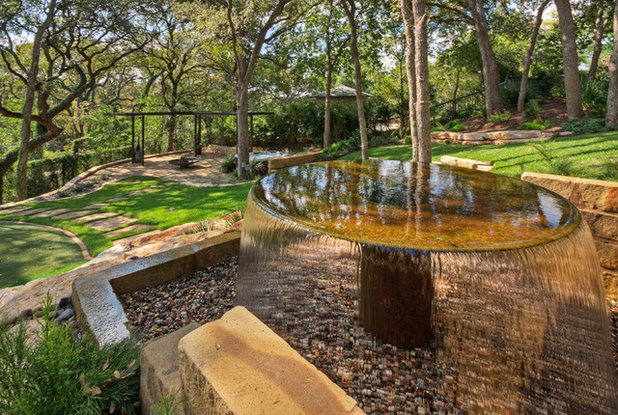
Pearson Landscape Services
Add WaterI bet you don't think of water as necessary for butterflies, but it is. You won't see them sipping from a pond or pool like birds, though, as they slurp droplets. This is why a fountain or other water feature that splashes a bit is important, as the action creates nearby butterfly-size mud puddles and drops to easily drink from. You can incorporate such a feature in almost any landscape design, from formal to informal.
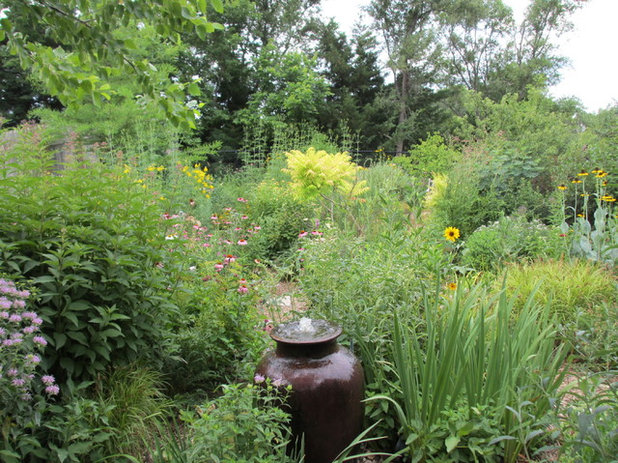
Benjamin Vogt / Monarch Gardens
A disappearing fountain with a rock base might work best for quenching a butterfly's thirst. You can place it among the plants so some water finds its way onto leaves. Use plants that have cupped leaves to hold rainwater, like sedum and prairie dock. Even consider creating a damp mud puddle in a shallow birdbath, which is particularly attractive to butterflies. (Think about it — butterflies use their long proboscis to pull out nectar from flowers, so they like to do the same with water from globs of mud.)
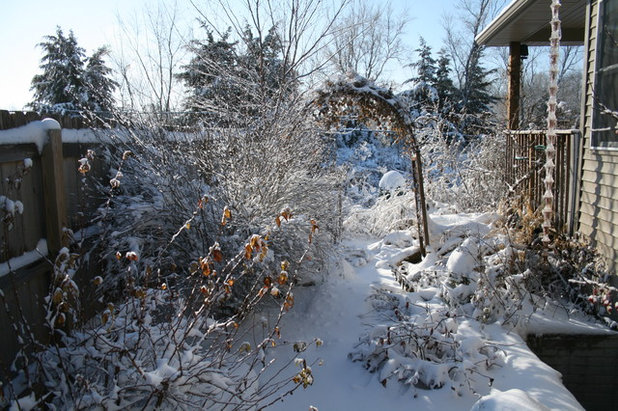
Benjamin Vogt / Monarch Gardens
Create a HabitatWhoa, what's this, a winter picture? Yup. Can you count the number of butterflies here? There could be dozens. Many butterflies overwinter as adults (mourning cloak), caterpillars (viceroy) or in a chrysalis (swallowtail).
This is one big reason not to cut down or clean up your garden in fall — butterflies are snuggled in among all that dead plant life, waiting to emerge in spring. Plus, leaving the garden up creates an added architectural element for you over a long winter. Wait until spring to clean up, and walk gently over fallen leaves and twigs when you do go back outside.
A beautiful lawn in a clean, modern landscape, filled with lots of architectural negative space, is often appropriate to a house's design. However, it's also a desert for butterflies. In addition, it may well be that the lawn is maintained with pesticides, fungicides and fertilizers, which are easily harmful to butterflies at every stage in their life cycle.
If you want butterflies, you simply can't spray anything in your garden or landscape (and neither can your neighbors). If you must spray something because you've exhausted every other avenue of treatment and thoroughly researched alternative strategies, try to spray when insects are least active, like late evening.
See nontoxic ways to tackle weeds
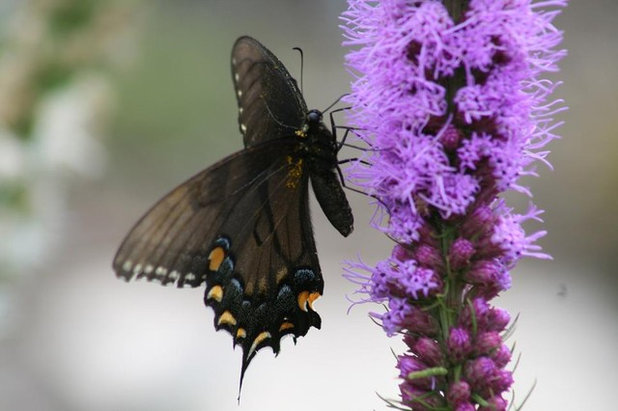
Benjamin Vogt / Monarch Gardens
Enjoy the ExperienceThere is nothing more pleasing than taking pride in and enjoying a designed landscape that complements your home and lifestyle. For many that experience can be elevated even more by creating a fourth dimension in the garden, that of insects like butterflies.
Ranging in size and color from spring to fall, healthy butterflies echo the landscape design and bring us home in ways we wouldn't have imagined before. Perhaps gardening for butterflies draws out the simple wonder of childhood in all of us, recalling a sense of peace and health many of us are missing in our hectic lives.





